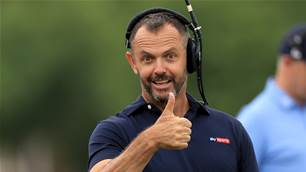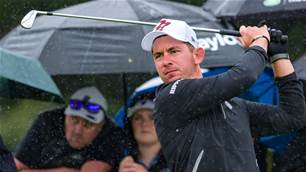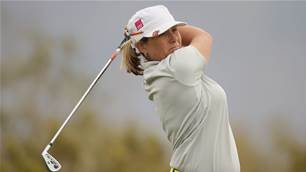In an upcoming episode of Golf Australia magazine’s The Thing About Golf podcast, a conversation with Nick O’Hern turned to the work he does with some of Australia’s most promising young professionals.
He relays the story of the first time he worked with Jordan Zunic, one of the most physically gifted 20-somethings in Australia and a player of enormous potential.
The point of the discussion was about expectations (and is worth listening to for that passage alone) but it also raised an interesting – and often overlooked – side issue about the impact of televised golf.
During that first session, O’Hern walked a practise round with Zunic and was impressed with the younger man’s play.
But when he said as much, Zunic expressed disappointment with several shots that O’Hern had believed to be perfectly acceptable.
This difference in each man’s expectations tied neatly into a similar theme expressed by the podcast’s most recent guest, former TV commentator Peter Kostis, about television and its role.
"Overly ambitious expectations about one’s own performance can be a sure-fire way to rob enjoyment from the game, no matter the level of player." - Rod Morri.
Kostis told John Huggan that the lack of TV footage of some of the game’s past greats likely skewed our view of the modern era.
While we are treated to an almost endless diet of Tiger Woods’ most remarkable shots both during telecasts and on social media, no such coverage existed when Sam Snead or Kathy Whitworth were at the peak of their games.
Yes, we have grainy black and white footage of some of the greats of the past but not the full blown, sun-up to sun-down tournament coverage of the modern era.
And that simple fact can’t help but to have shaped the expectations of the last generation or two of golfers, both recreational and elite.
A golf coach on Twitter recently made the point that TV only shows the very best golfers in the world but, importantly, it only shows those players when playing their best.
Anyone who has attended a golf tournament in person will attest – no doubt with some surprise – to just how many poor shots even the best players actually hit.
But for the TV viewer no such struggle exists. Understandably, TV concentrates on those who are leading or in contention at any given moment and – by definition – that means players who are playing their best.
Yes, there are a few who attract the cameras regardless (Tiger is the poster child for this) but even for most world top-20 players we only see their poor shots if they happen to occur during a stretch where they are playing well.
Kostis is right about it being a skewed view and all golfers, whether hoping to one day play the LPGA or simply looking to enjoy recreational golf for a lifetime, would be well advised to be aware of it.
Overly ambitious expectations about one’s own performance can be a sure-fire way to rob enjoyment from the game, no matter the level of player.
And as one of my favourite golf sayings notes: ‘when it ceases to be fun, it ceases to be golf.’
Related Articles

The Thing About Golf: #141 Andrew Coltart

The Thing About Golf: #133 Lucas Herbert













